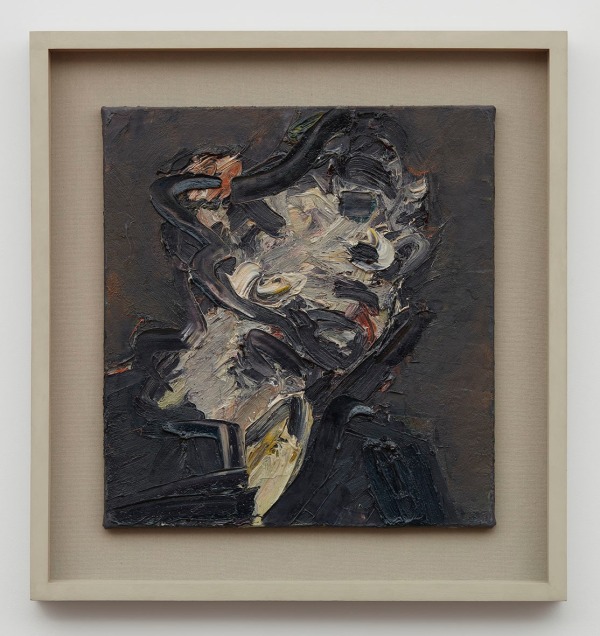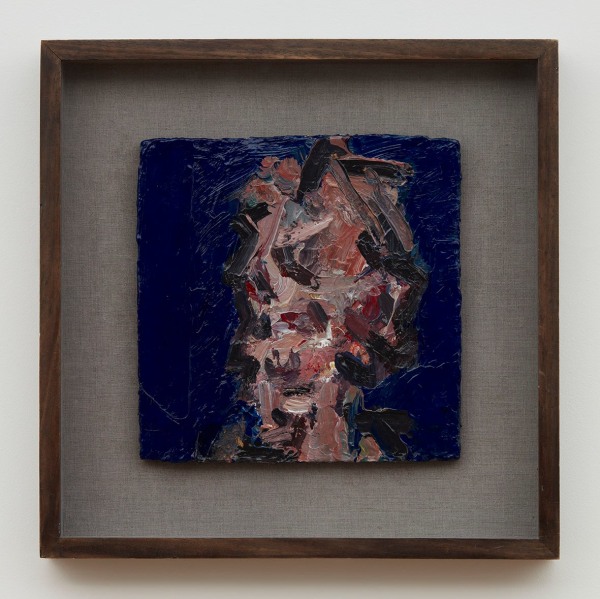Frank Auerbach: Landscapes and Portraits
Timothy Taylor, New York, is honored to present an exhibition of works by the British artist Frank Auerbach. The subject of a major retrospective at the Tate Britain in 2015-16, Auerbach has established himself as one of the pre-eminent contemporary painters through an oeuvre that spans more than fifty years. The forthcoming exhibition at Timothy Taylor is the first show devoted to Auerbach in New York since 2006. This exhibition brings together examples of portraits of some of Auerbach’s favorite sitters; his wife, Julia, writer and art critic William Feaver, and Juliet Yardley Mills (J.Y.M) – the artist’s principal model since 1963, and the subject of over seventy works. In compliment to these portraits are a number of paintings of North London landscapes - Camden, Primrose Hill and Mornington Crescent – areas local to the artist’s home and studio, which have also served as reoccurring subjects over the course of his career.
Drawing from his daily life, and using his work as a tool to deal with the experience of existence, Auerbach has stated that painting is “something that happens to a man working in a room, alone with his actions, his ideas, and perhaps his model. He is affected by his circumstances and by the standards and events of his time, but he seems to me to be the sole coherent unit.”
Whilst Auerbach’s paintings might appear sudden and reactive, they are works of tremendous concentration and physical application that capture the very soul of the subject. After many months and hours of sittings, where applied paint is typically scraped back and then reapplied, the final image will often then emerge within a matter of hours. In this moment, Auerbach blends figuration with raw textures, taking the physical properties of paint to a visceral extreme. It is the surface depth and the subtle palette existing on the very edge of order, that defines the sense of space in these extraordinary paintings and creates such a unique and compelling experience for the viewer.
Auerbach paints in the same studio he has occupied since 1954, reputedly working all day, seven days a week, revisiting the inventory of subject matter he has accumulated from his regular models and his quotidian local life. Sitting for the artist was described by William Feaver as “rather like being at the dentist”; an arduous and lengthy process that produces a work of the most refined quality.
The British academic and art historian Simon Schama describes Auerbach’s studio like “some sort of place where rationing has just been abolished. It’s the ultimate sweetshop. It’s full of touchy-feely paint... It’s Auerbach who’s really building things, layering it on in a sort of party of impasto.”
-
 Frank AuerbachHead of JYM1984-5Oil on canvas26 x 24 in. (66 x 61 cm)
Frank AuerbachHead of JYM1984-5Oil on canvas26 x 24 in. (66 x 61 cm) -
 Frank AuerbachHead of Julia III1999Acrylic on board11 ⅞ x 11 ⅞ in. (30 x 30 cm)
Frank AuerbachHead of Julia III1999Acrylic on board11 ⅞ x 11 ⅞ in. (30 x 30 cm) -
 Frank AuerbachReclining Head of Julia2003-4Acrylic on board16 ⅛ x 24 ⅛ in. (40.9 x 61.3 cm)
Frank AuerbachReclining Head of Julia2003-4Acrylic on board16 ⅛ x 24 ⅛ in. (40.9 x 61.3 cm) -
 Frank AuerbachReclining Head of Julia2006Acrylic on board18 ⅛ x 18 ⅛ in. (46 x 46 cm)
Frank AuerbachReclining Head of Julia2006Acrylic on board18 ⅛ x 18 ⅛ in. (46 x 46 cm) -
 Frank AuerbachStudy of William Feaver2008Oil on board11 ⅞ x 9 ¾ in, (30.2 x 24.8 cm)
Frank AuerbachStudy of William Feaver2008Oil on board11 ⅞ x 9 ¾ in, (30.2 x 24.8 cm)












